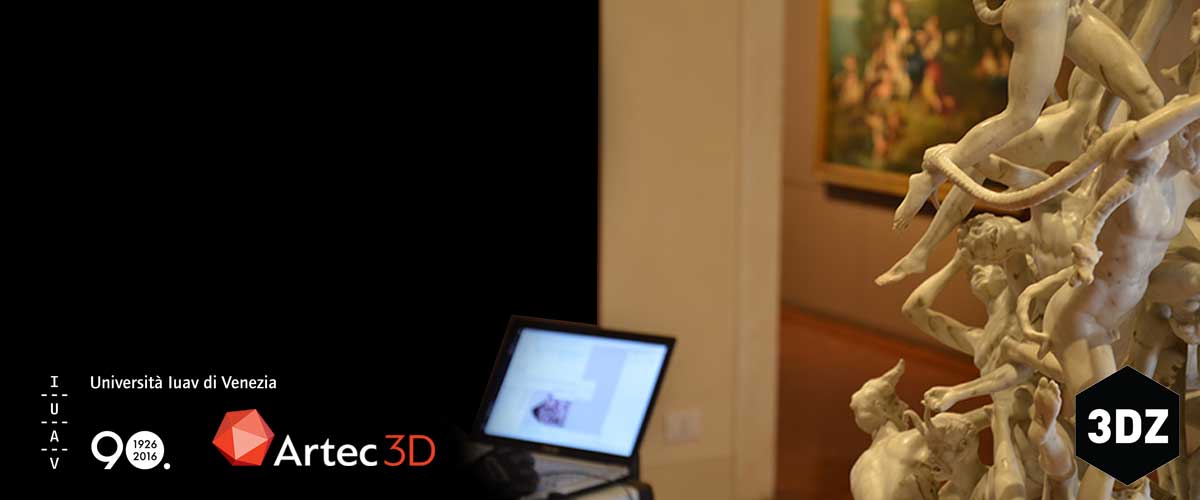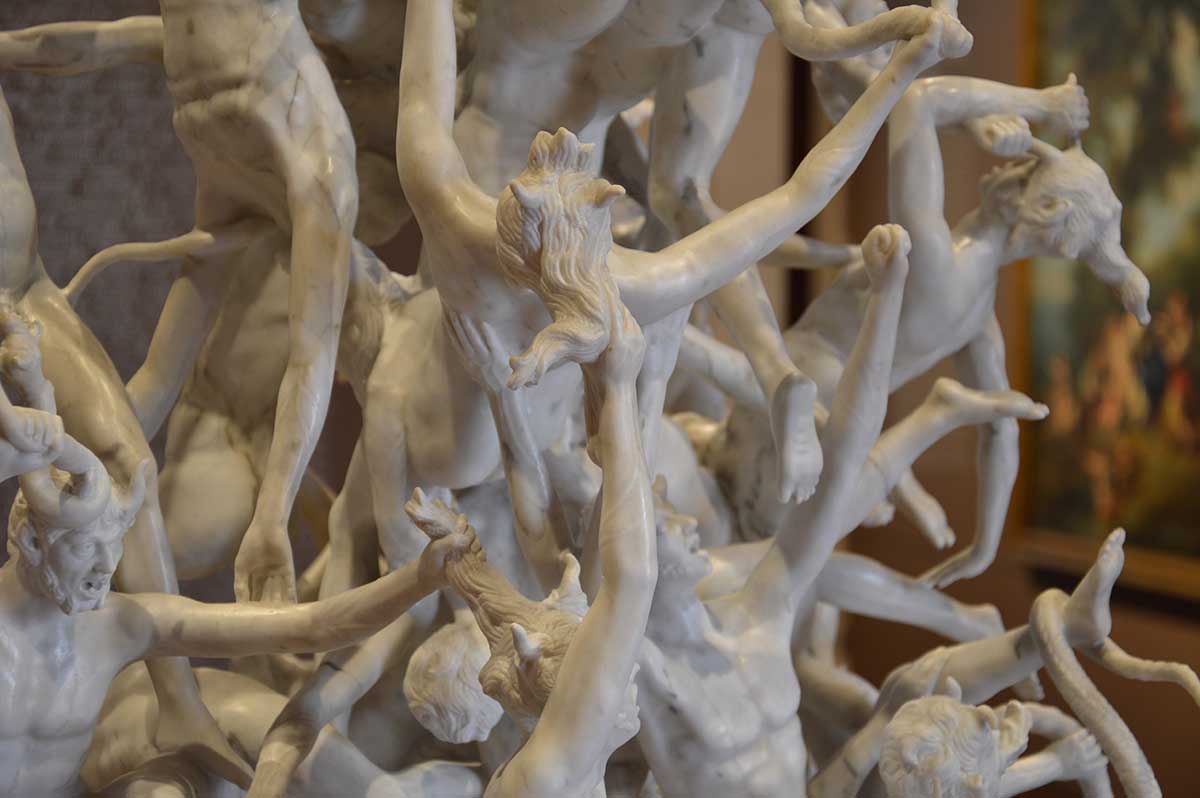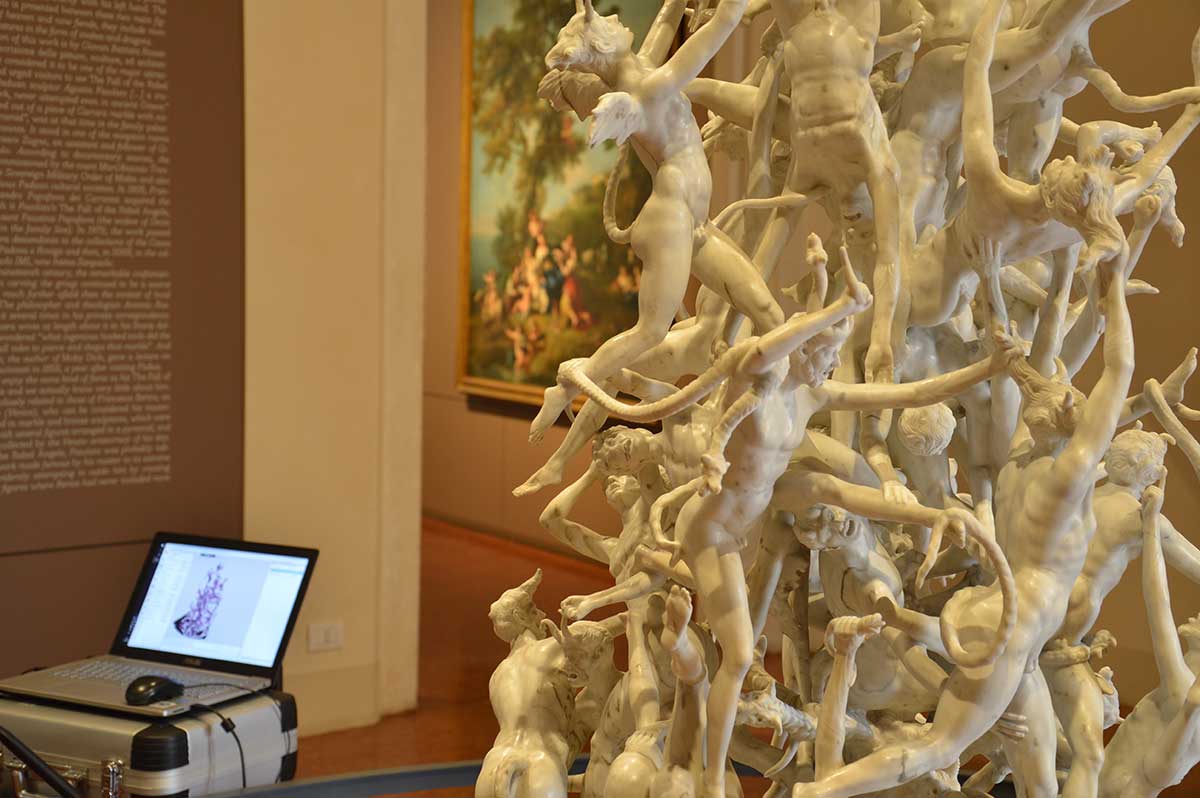Tuesday 10 May Prof. Matteo Turchetto, lecturer in Industrial Engineering at the University of Padua, in collaboration with Prof. Francesco Guerra of the Department of Architecture, Construction and Conservation of the IUAV of Venice, as part of the agreement between the Gallerie d’Italia of Vicenza and the Masters in Digital Exhibit and Digital Architecture of the IUAV University of Venice (Master Mde and Master Madi), with their staff they carried out a three-dimensional scan of the eighteenth-century sculpture “The Fall of the Rebel Angels” .
The imposing marble statue created by Agostino Fasolato is one of the absolute masterpieces of Venetian statuary and is located in Vicenza, in the Intesa San Paolo museum complex, at the Gallerie d’Italia in Palazzo Leoni Montanari.

The work scanned in 3D
“The Fall of the Rebel Angels” by Agostino Fasolato is an eighteenth-century sculpture almost two meters high, consisting of a pyramid of sixty figures obtained from a single block of Carrara marble. At the top is the archangel Michael who, according to religious tradition, was one of the proponents of the expulsion of the rebel angels and their condemnation to hellish pains. It represents an extraordinary intertwining of bodies that seems to reproduce the infernal flames of divine condemnation. The fallen angels are in fact depicted in the moment of their transformation into demons.
This sophisticated work of remarkable technical virtuosity is particularly interesting because it is particularly original compared to the sculptures of the time.
3D scanning of sculptural works
The scan of the statue was made using an Artec Eva scanner, distributed in Italy by 3DZ. Artec 3D scanners are portable, simple to use and very handy. This makes them particularly suitable for surveying in difficult logistical situations, such as museums, where it is not always possible to remove the finds from the windows or move them to the ideal position for scanning.
To these qualities is also added the 3D scanning speed which in this case made it possible to digitize the work in a few minutes: the scanner basically behaves like a 3D video camera that allows you to capture three-dimensional shapes simply by shooting the object with the device. In fact, the software supplied with these systems is able to recognize the geometry of the solid and automatically align the 3D images detected without the use of any type of marker or referencing system.
Another interesting feature is the possibility of acquiring the color image of the scanned object at the same time as the shape. In this way, a texture applied to the three-dimensional model is automatically produced, obtaining a virtual model of the find identical to the original and absolutely realistic.
In conclusion, in a few minutes and with reasonable ease it was possible to obtain a very accurate relief of the statue, in scale and with high definition color textures, ready, if desired, to be published online or to be reproduced in 3D printing. in a format that guarantees the accessibility of the work to all.
3DZ and the cultural heritage sector
3DZ includes important collaborations in the cultural heritage sector, including that with the 3D Lab Cultural Association, which supports the 3D Archeolab project whose goal is to enhance the cultural heritage of museums by leveraging innovative technologies. In this article we had already dealt with the project for setting up a museum itinerary for blind and visually impaired people, made with 3D printed works.
So not just scanning complex works: thanks to the solutions offered by 3D printing, scanning and modeling, it is now possible to ensure the accessibility of museum collections, allowing you to have a digital version of the works and create very faithful copies.





